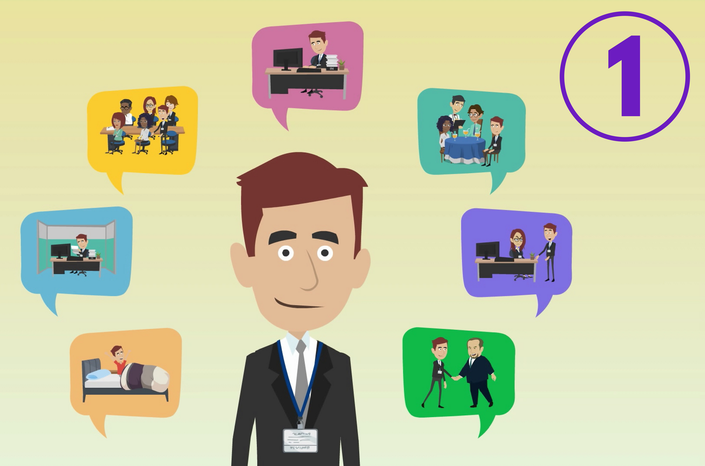
- Do you ever get nervous speaking English with your co-workers?
- Are you often unsure about the “right” word or expression to use at work?
- Do you want to speak to co-workers with ease and confidence?
Get serious about improving your business English. This two-part course helps you learn commonly used words and phrases that you need to succeed in English at work. In each lesson, you’ll learn common and useful vocabulary for everyday situations found in an office.
The course includes 5 detailed lessons in each part (a total of 10 lessons for Parts 1 & 2) that describe each part of a typical workday. Learn vocabulary related to arriving at work, checking mail and email, attending office meetings, going to business lunches, handling computer problems, scheduling a meeting, meeting with your boss, and socializing with coworkers.
After listening to Using English at Work, you will be better able to speak and write business English. Get it right with this complete course in daily English for businesspeople like you!
Course Length (Part 1) -- 2.25 hours (1.75 hours video + text)
Lessons Included
Lesson 1 – Arriving at Work
Learn how to talk about security gates, parking permits, key cards, badges, entrances, visitor passes, and the sort of English you'll need to get started in the morning. Included in this lesson:
- An explanation of the popular American phrase “TGIF”
- Vocabulary related to parking your car at work
- The difference between “at all times” and “in no time”
- What it means “to make fun of” someone, and why it’s not always fun
Lesson 2 – Checking Email, Mail, and Voicemail
Every businessperson has mail, email, and voicemail to deal with. Understand how to use the most important terms for all three in this lesson. Included in this lesson:
- Vocabulary related to physical mail, including “junk mail”
- A typical routine for checking and sorting email
- What to do when friends “forward” personal emails to you at work
- Common steps to take when checking your phone’s “voicemail”
Lesson 3 – Attending the Morning Meeting
Have to go to a morning meeting with your boss? Learn some typical English phrases and expressions used at these meetings. Included in this lesson:
- A description of where many meetings occur: the “conference room”
- Common meeting vocabulary, such as “agenda” and “handout”
- Why not everyone is “paying attention” in a meeting
- What a “pep talk” is at the end of a meeting
Lesson 4 – Working at Your Desk
Can you describe everything on your desk at work right now in English? You will after listening to and reading this lesson, which will explain it all to you. Included in this lesson:
- Vocabulary related to your work desk and the things on and around it
- Common office supplies, including “paper clips” and “Scotch tape”
- An explanation of the phrase “get down to business”
- Tasks to do at work, such as “take notes” and “analyze data”
Lesson 5 – Taking a Break and Eating Lunch
Some of the most important conversations with your co-workers happen when you're not working, such as on a break or eating lunch. Learn how to handle them in this lesson. Included in this lesson:
- The “break room” and what kind of snacks you can find there
- Being invited to go out to lunch with coworkers
- Vocabulary related to having lunch at a restaurant
- The difference between “separate checks” and paying together
Be sure to get Part 2 of this course as well!
Not sure? Click to watch a free preview of a Story and Explanation video from our Day in the Life of Jeff course.
Your Instructor

Dr. Jeff McQuillan is a recognized expert and leading researcher in English language learning and teaching. He received his Ph.D. in applied linguistics and education from the University of Southern California, and was a university professor for many years. He's published dozens of articles and books related to linguistics, literacy, and English language learning. His work has appeared in the media both nationally and internationally, including CNN, Washington Post, Los Angeles Times, Deutschlandfunk Radio, El Pais, China Post, MacWorld, Diario Financiero, Universia, The Times (London), The Wall Street Journal, and many others.
